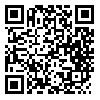Volume 14, Issue 1 (5-2023)
JAP 2023, 14(1): 60-75 |
Back to browse issues page
Ethics code: IR.BUMS.REC.1401.181
Download citation:
BibTeX | RIS | EndNote | Medlars | ProCite | Reference Manager | RefWorks
Send citation to:



BibTeX | RIS | EndNote | Medlars | ProCite | Reference Manager | RefWorks
Send citation to:
Ebrahimbai Salami A A, Shahabizadeh F, Ahi Q, Jarahi Fariz J. The lifestyle model of patients with chronic back pain according to the role of mood/anxiety symptoms and emotional schemas with the mediation of pain coping strategies. JAP 2023; 14 (1) :60-75
URL: http://jap.iums.ac.ir/article-1-5687-en.html
URL: http://jap.iums.ac.ir/article-1-5687-en.html
1- Ph.D. student in Psychology, Faculty of Psychology, Islamic Azad University, Birjand branch, Iran
2- Assistant Professor, Department of Psychology, Faculty of Psychology, Islamic Azad University, Birjand branc, Iran ,f_shahabizadeh@yahoo.com
3- Assistant Professor, Department of Psychology, Faculty of Psychology, Islamic Azad University, Birjand branch, Iran
4- Assistant Professor, Department of Basic Sciences, Wamar Faculty of Mathematics, Islamic Azad University, Birjand Branch, Iran
2- Assistant Professor, Department of Psychology, Faculty of Psychology, Islamic Azad University, Birjand branc, Iran ,
3- Assistant Professor, Department of Psychology, Faculty of Psychology, Islamic Azad University, Birjand branch, Iran
4- Assistant Professor, Department of Basic Sciences, Wamar Faculty of Mathematics, Islamic Azad University, Birjand Branch, Iran
Abstract: (1404 Views)
Abstract
Background and purpose: the lifestyle of patients is affected by mood/anxiety symptoms and emotional schemas and coping strategies with pain, so the present study aims to provide a conceptual model of the lifestyle of patients with chronic back pain with regard to the role of mood/anxiety symptoms and Emotional schemas and pain coping strategies were performed.
Research method: The descriptive research method was correlation type. The statistical population consisted of all women and men (25 to 55) years old with chronic back pain who referred to Razi Hospital and hospitals in Tarbat Heydarieh city in 1400-1401, which numbered 400 people, considering the entry criteria. The tools used are: questionnaire of emotional symptoms (mood/anxiety), short form of emotional schemas, strategies for coping with pain Rosenstein and Kaif (1983) and life style during quarantine by Ali Akbari Dehkordi. The data was analyzed by structural equation modeling method.
Findings: The fitted model showed that the indirect effect of mood/anxiety symptoms on lifestyle through dealing with pain (β=-0.165 and P<0.05) are significant at the 0.05 level. The results of the study supported the mediation of pain coping strategies in the relationship between mood/anxiety symptoms and emotional schemas with patients' lifestyle.
Conclusion: Developing therapeutic interventions to reduce emotional schemas and improve pain coping strategies is useful in improving and improving the lifestyle of chronic pain sufferers.
Keywords: mood/anxiety symptoms, emotional schemas, lifestyle, pain coping strategies
Type of Study: Original |
Subject:
Chronic pain managment
Received: 2022.12.1 | Accepted: 2023.01.17 | Published: 2023.05.31
Received: 2022.12.1 | Accepted: 2023.01.17 | Published: 2023.05.31
Send email to the article author
| Rights and permissions | |
 |
This work is licensed under a Creative Commons Attribution-NonCommercial 4.0 International License. |






